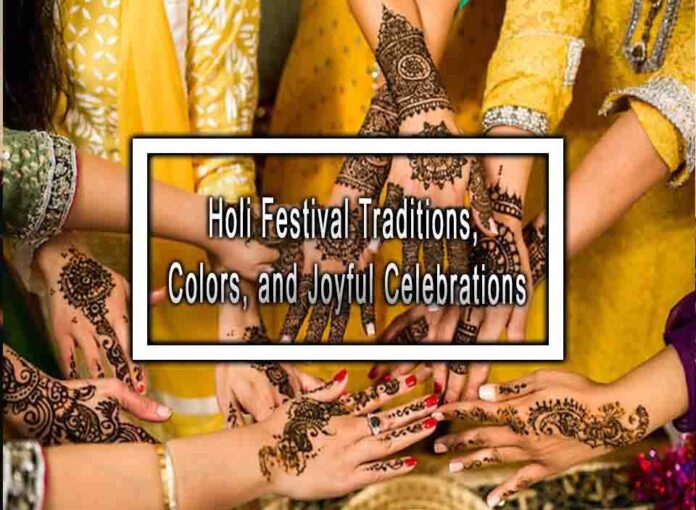Holi, known as the “Festival of Colors” or “Festival of Love,” is one of the most vibrant and joyous celebrations in India and among Indian communities worldwide. This spring festival is a time of exuberant festivities, unity, and the spreading of happiness. Here’s a look at the traditions, colors, and the joyful celebrations of Holi:
1. Date of Celebration:
- Holi is celebrated on the full moon day in the Hindu month of Phalgun, which usually falls in March on the Gregorian calendar. The festival lasts for two days, with Holika Dahan (bonfire night) on the first evening and Rangwali Holi (colorful Holi) on the second day.
2. Holika Dahan:
- The celebration begins with a bonfire on the evening before Holi. This ritual symbolizes the triumph of good over evil and commemorates the story of Prahlad and Holika from Hindu mythology.

3. Colors and Gulal:
- The heart of Holi lies in the playful throwing of colored powders, known as “gulal,” and water balloons filled with colored water. People use these vibrant colors to smear, splash, and playfully drench each other.
4. Traditional Clothing:
- People often wear white clothing on Holi to enhance the visual impact of the colorful powders. By the end of the day, everyone is typically covered in a kaleidoscope of hues.
5. Water Balloons and Pichkaris:
- Water balloons and “pichkaris” (water guns) are used to drench friends and family with colored water. The water element adds an element of refreshment to the celebration.
6. Music and Dance:
- Music and dance are integral to Holi celebrations. Traditional folk songs, known as “Holi songs,” and lively dances add to the festive atmosphere.
7. Sweets and Treats:
- Special Holi delicacies, such as “gujiya” (sweet dumplings), “malpua” (pancakes), and “thandai” (a spiced milk drink), are prepared and shared with loved ones.
8. Social Unity:
- Holi is a time to bridge divides, mend broken relationships, and strengthen social bonds. People exchange greetings, visit friends and family, and extend goodwill to all.
9. Public Celebrations:
- Holi is celebrated in public spaces, streets, and communities with grand processions, music, and dance performances. These public events bring people of all backgrounds together.
10. Cultural Significance: –
Holi signifies the arrival of spring, the victory of good over evil, and the end of winter’s gloom. It’s also a celebration of love, friendship, and the universal spirit of joy.
11. Regional Variations: –
Different regions in India have their unique Holi traditions. In some places, it may involve special rituals or unique customs, like the Lathmar Holi in Barsana, where women playfully beat men with sticks.
12. Safe Celebrations: –
While Holi is a joyful occasion, it’s important to practice it safely. Use non-toxic, eco-friendly colors and respect people’s boundaries when playing with colors or water.
Holi is a time when social norms are temporarily relaxed, and people of all backgrounds come together to celebrate the beauty of life and the vibrant colors of the world. It’s a celebration of unity, love, and the simple joy of being alive.











